Site Visit
SITE VISIT | Wythenshawe Hall
More than two years after it was ravaged by a fire, work is still ongoing to rebuild the 16th-century Wythenshawe Hall. Place North West paid a visit with Neal Charlton of architect Buttress to see how main contractor Conlon is progressing with the building’s renovation.
In March 2016 the hall was set ablaze in an arson attack that severely damaged the timber-framed hall, built around 1540, prompting Manchester City Council to bring forward a planning application to restore the building in November that year.
Buttress has been involved with the hall since long before the fire, having worked on a conservation management plan and a condition survey in 2008, and has been overseeing the restoration works in partnership with Conlon and the council.
Damage to hall has been extensive, not just from the fire but also the water damage caused by the need to extinguish the flames. According to Charlton it took months for the building to fully dry out, after it spent a long period of time exposed to the elements. This has caused damage to the timber-framed building including warping and mould on wooden panels.
A scaffold and temporary roof has since secured the building against the wind and rain, and work is ongoing to restore the building’s slate roof. The hall’s bell tower was also removed following the fire and sits outside the entrance encased in a scaffold of its own – once renovated, it will be restored to the roof.
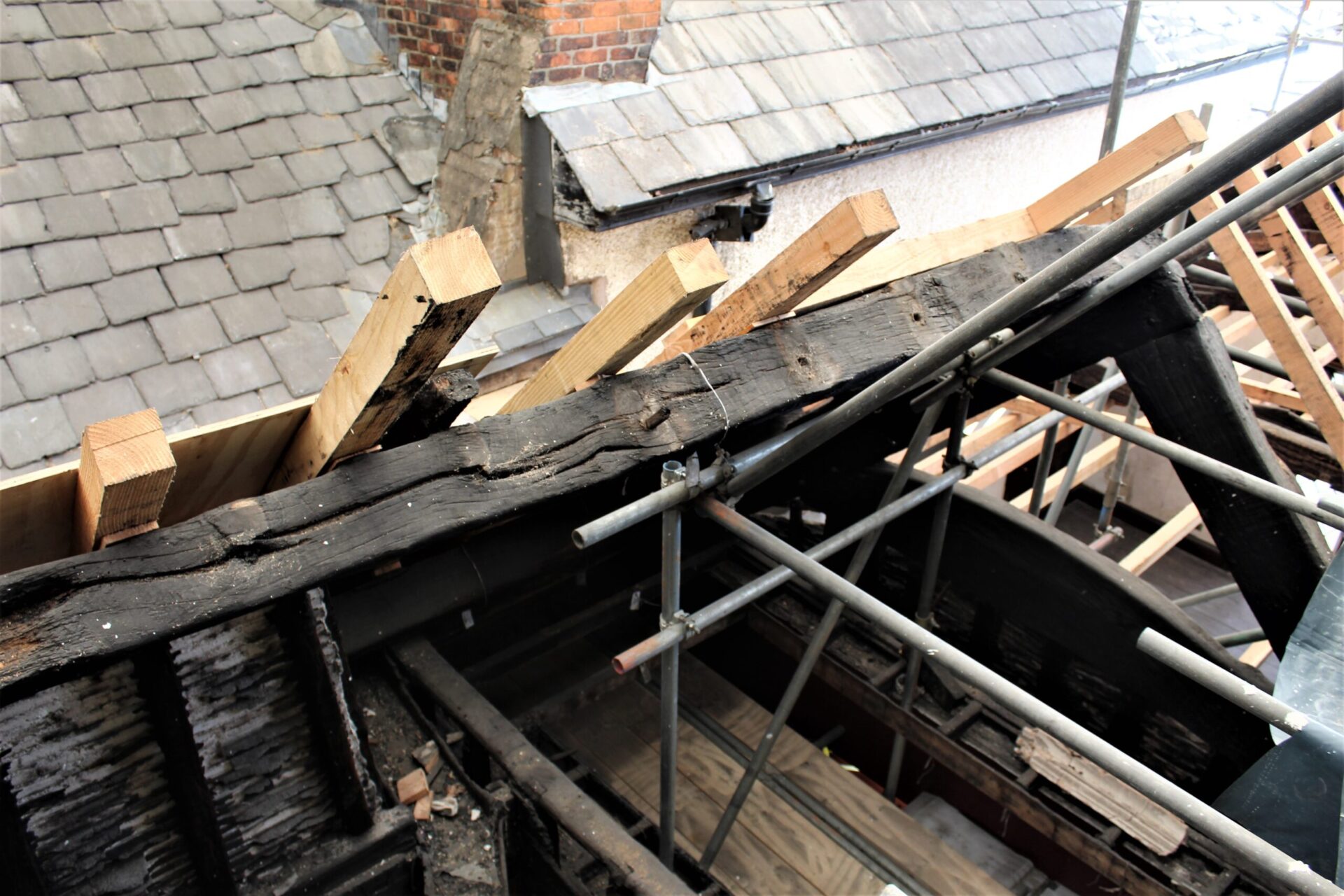
Restoration of the roof is still ongoing
Work is progressing on the roof where much of the slate has been restored while supports have been secured. Charlton said many of the large timbers remain structurally sound and even “fireproof” due to the charring caused by the fire.
Part of the building’s roof was formed of stone slabs, added to the hall at a later date but these will not be retained, although through a quirk of fate these actually helped to stop the fire from spreading.
Much of the roof is now complete with new supporting structures in place.
Elsewhere, much of the historic material has been saved, with the team examining and tagging beams, panels, bricks, and furniture individually so these can be stored off-site then re-fitted in place as the interior renovation completes.
Some of the stained-glass windows even melted in the fire due to the extreme heat but will be remade based on photographs. There have even been some surprises uncovered including some 16th-century graffiti left there by the hall’s original builders.
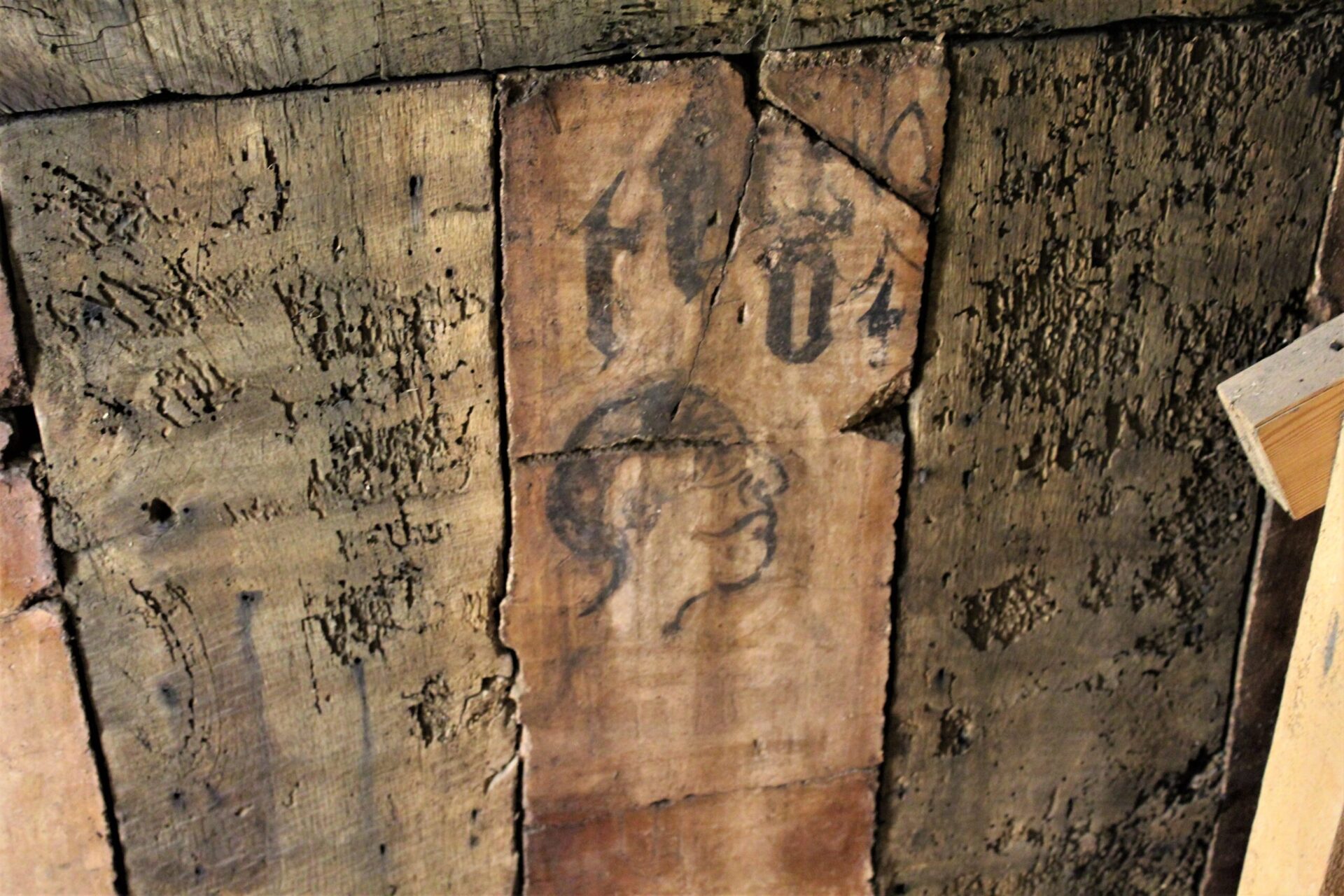
16th-century graffiti has been uncovered during the restoration
Conlon is understood to be pricing the interior restoration package with Manchester City Council under a separate deal to its exterior works, which are still ongoing.
This interior work will require an army of specialists to restore features such as cornices, windows, plaster, and wooden panelling. Moulded plaster ceilings will also be renovated to look as they did before the fire.
Surveys undertaken so far including mortar analysis, dry-rot surveys, paint analysis, and studies into the make-up of the building’s plaster.
Extensive work has taken place to make sure any replacement materials are the real deal, with Charlton explaining how an on-site carpenter had worked for months to make replica oak pegs to help support one of the fire-damaged beams.
The council is yet to make a decision on what the role of the hall will be when complete – for example, as an education space, or an events space – instead focussing on restoring the building to its former glory instead.
The majority of the cost has been covered by insurance claims from the fire, but the council has also used some of its own funding to undertake repairs and additional works not covered by the fire, which Charlton said was “the right approach; it doesn’t make sense for us to do only part of it and come back to finish work at a later date”.
A completion date for the hall’s exterior work is yet to be confirmed but it is hoped Conlon will be able to start on interior restoration by the end of the year.
Click any image to launch gallery
- Restoration of the roof is still ongoing
- 16th-century graffiti has been uncovered during the restoration


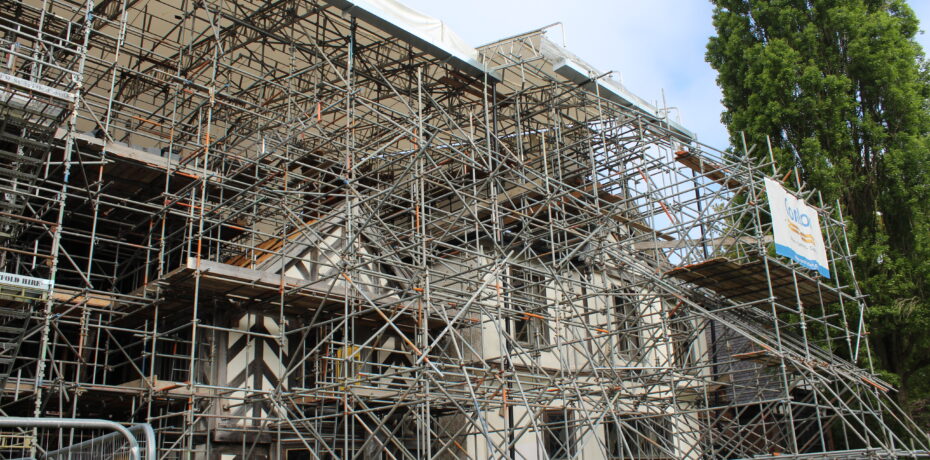
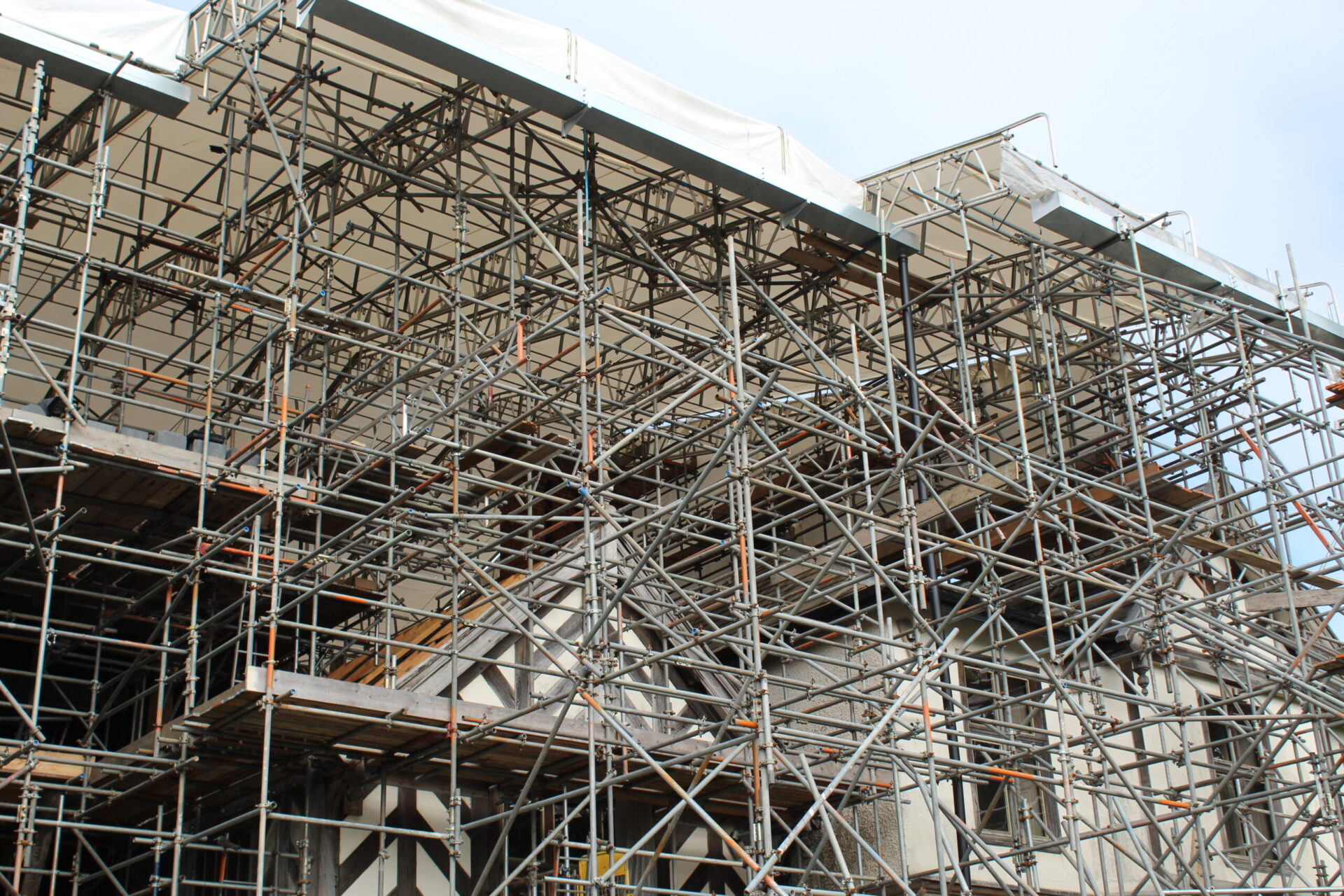
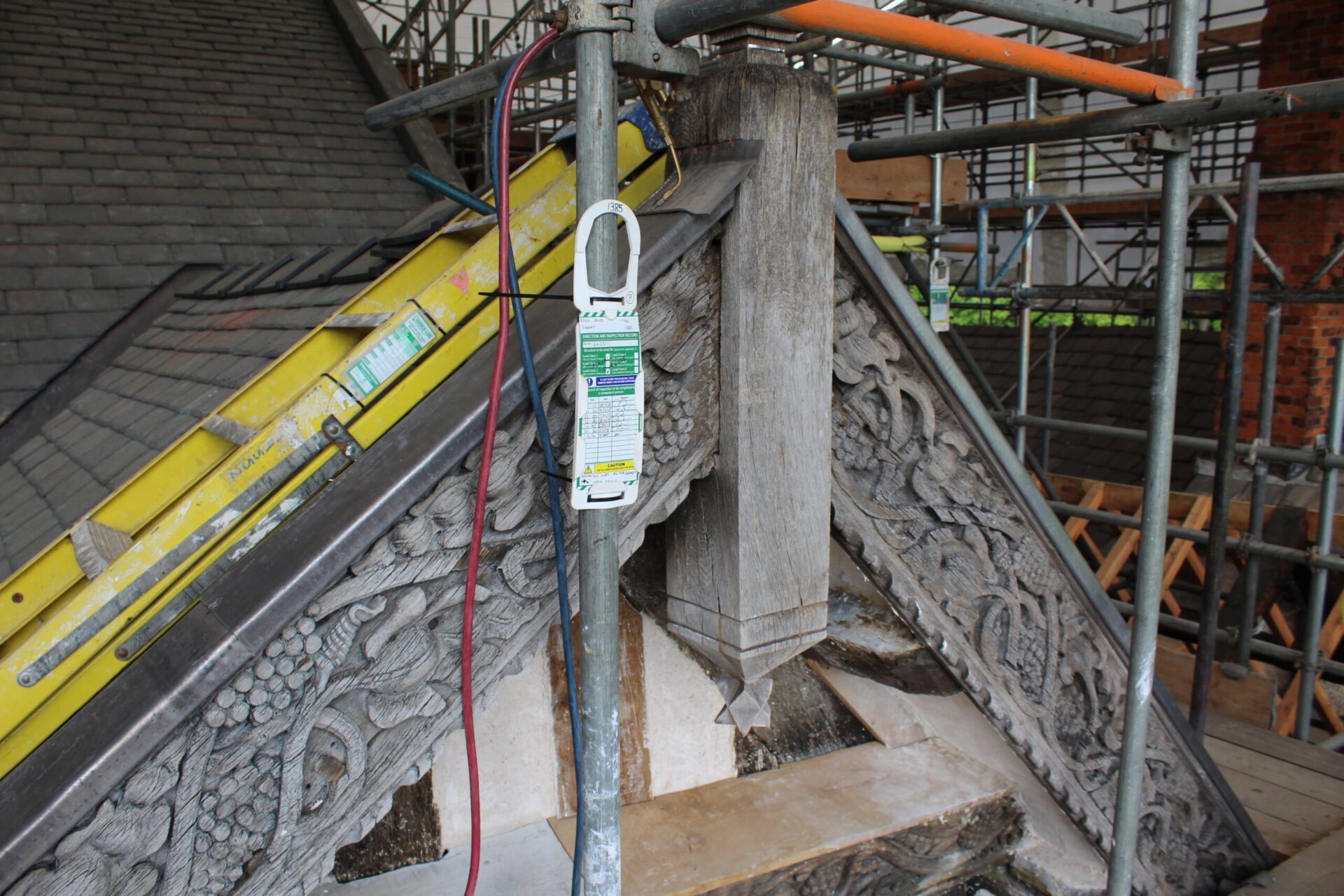
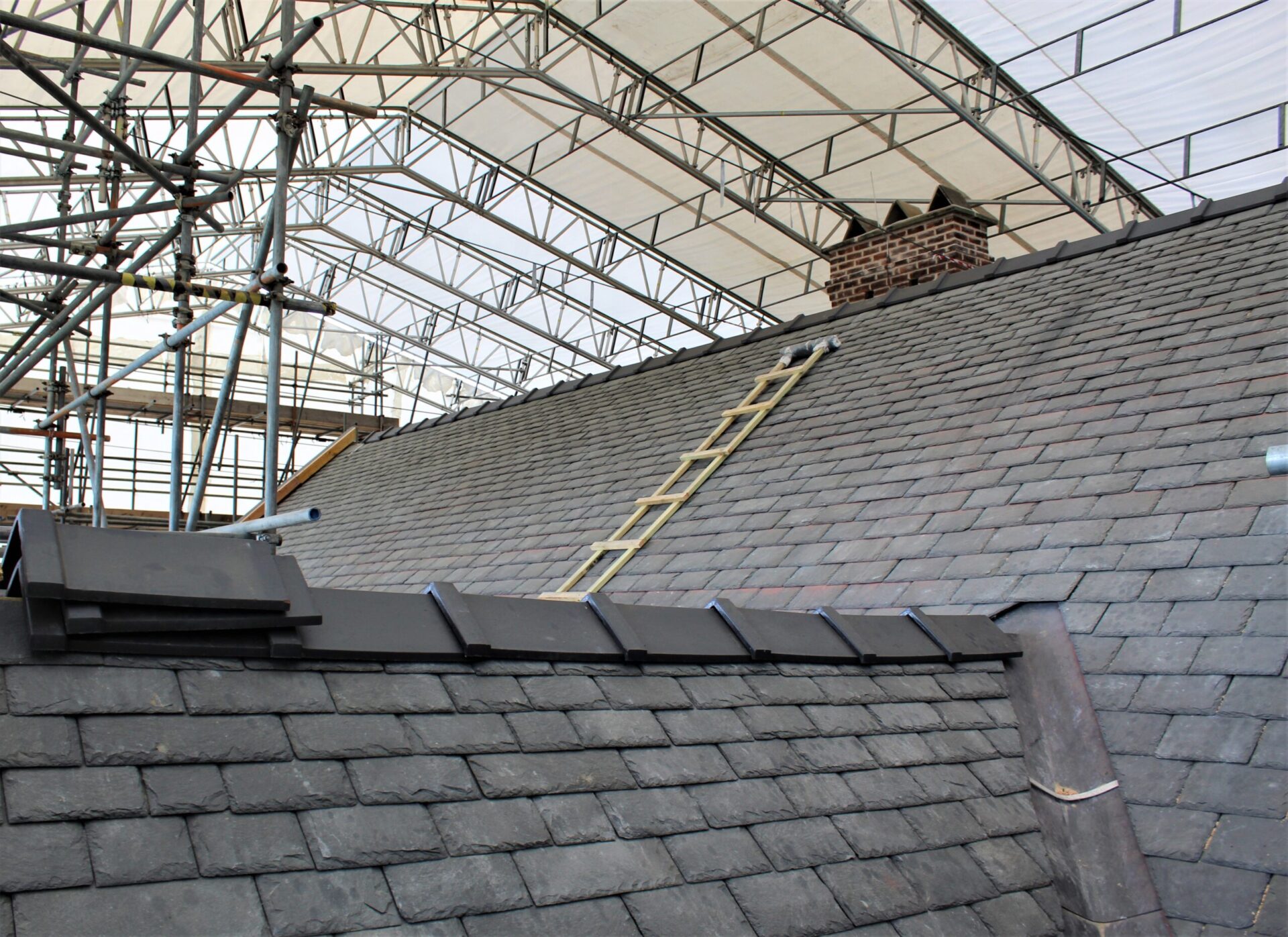
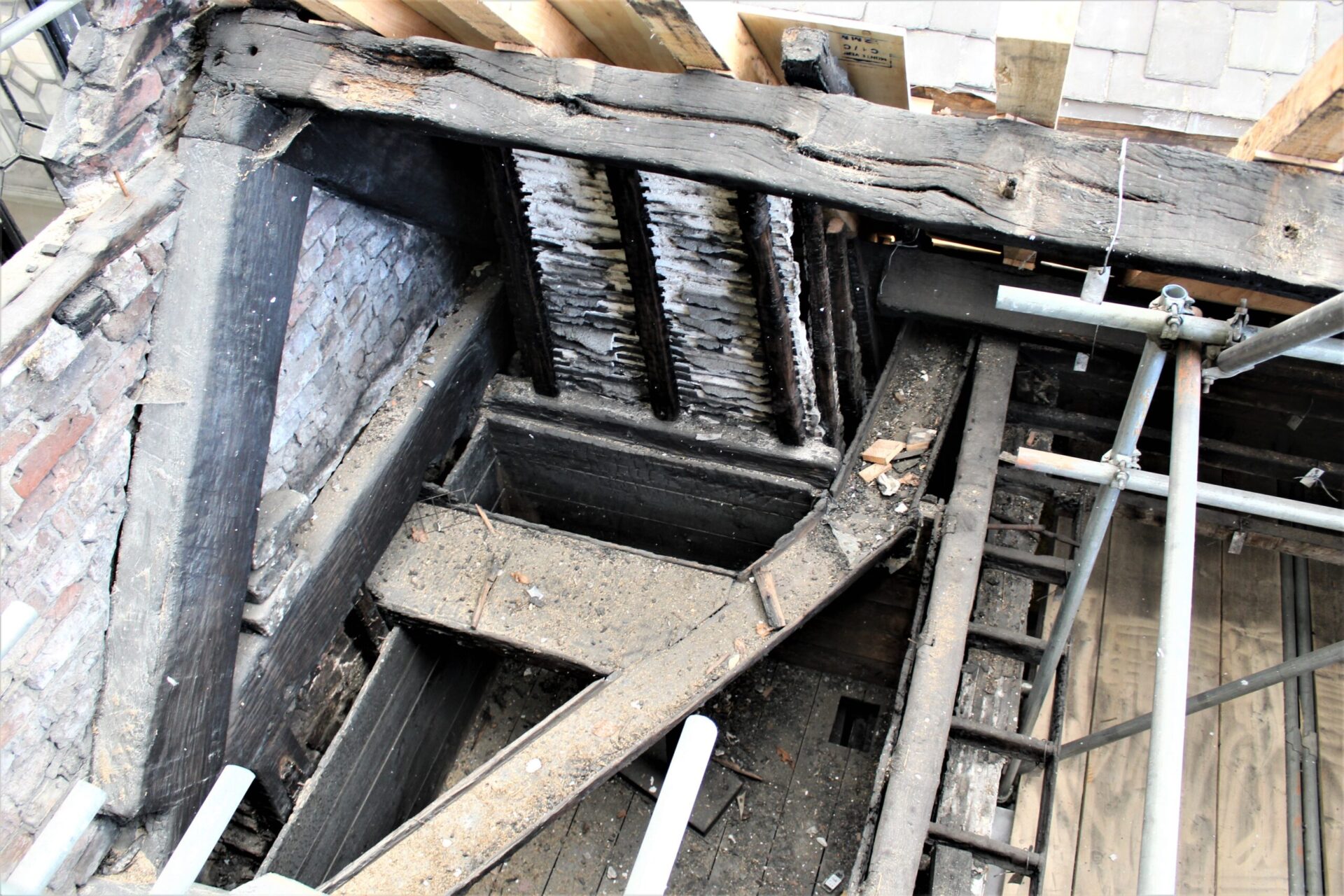

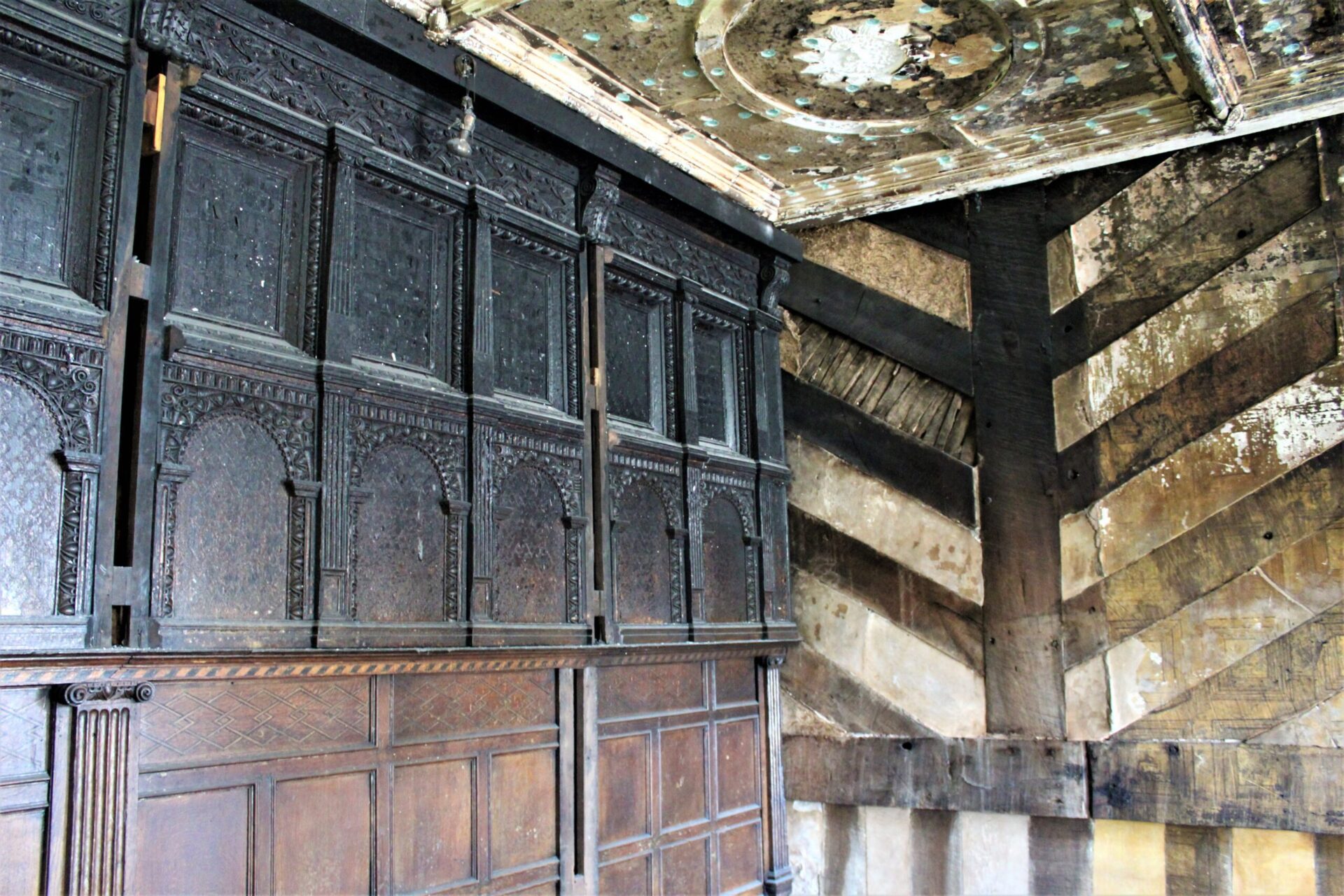
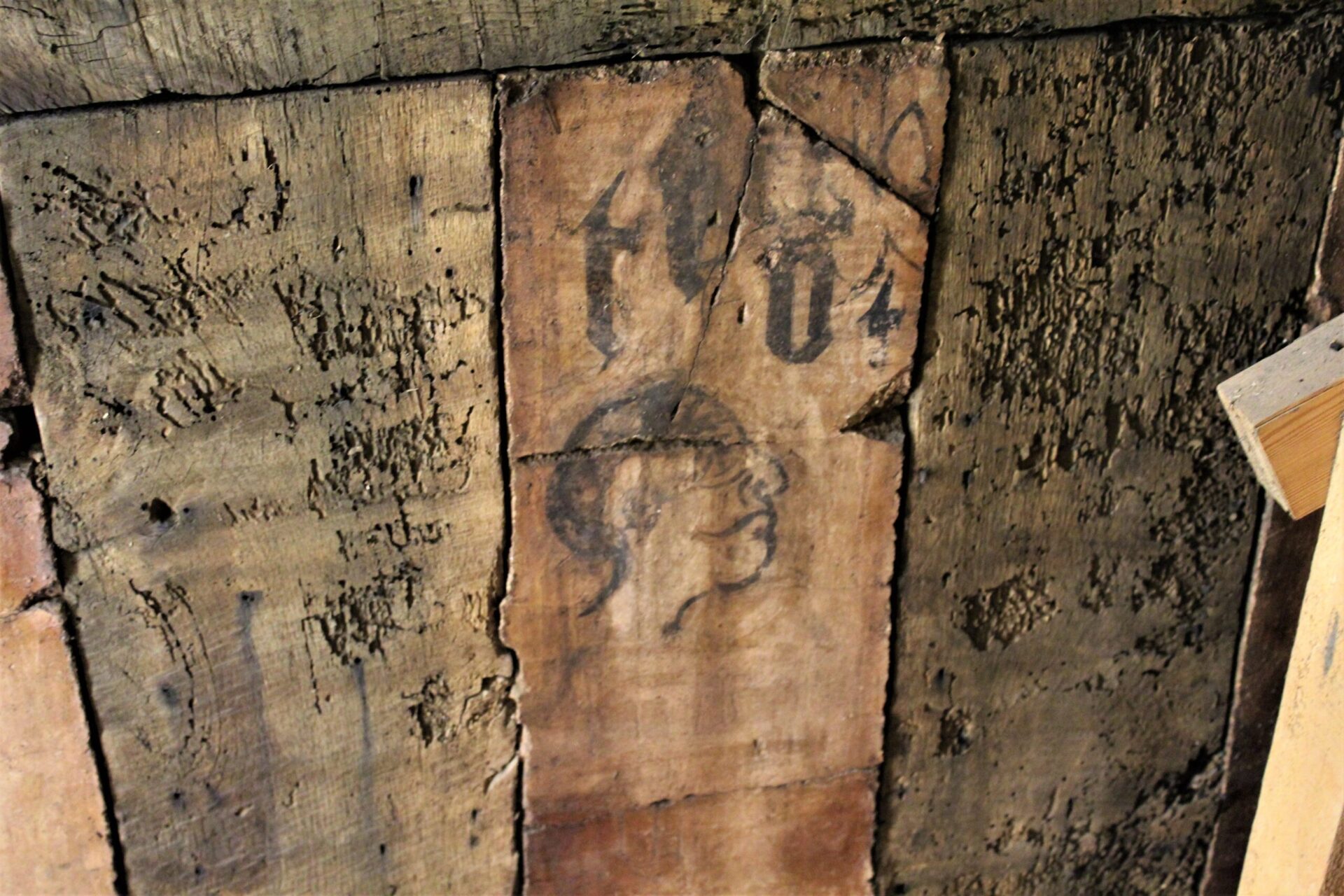
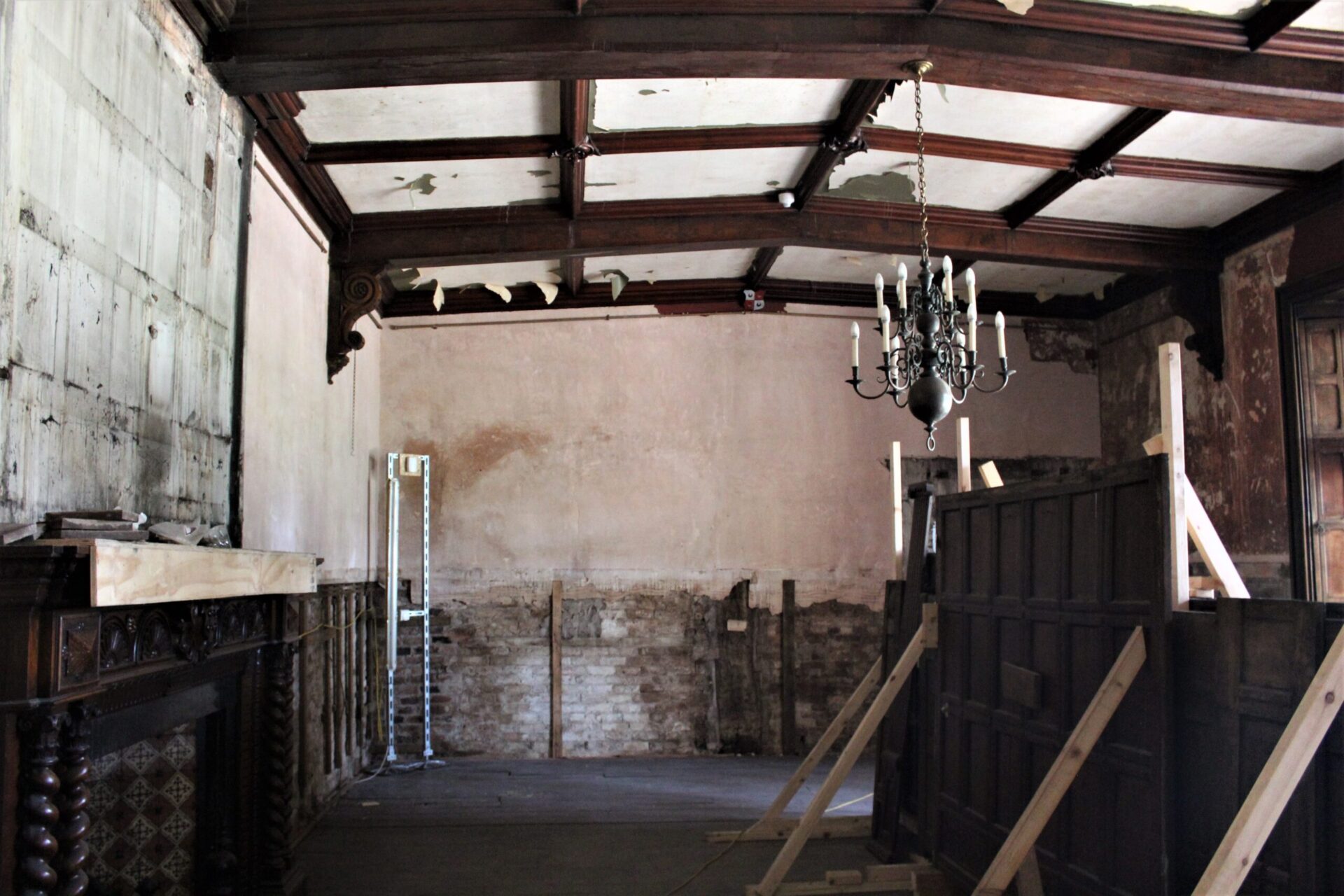
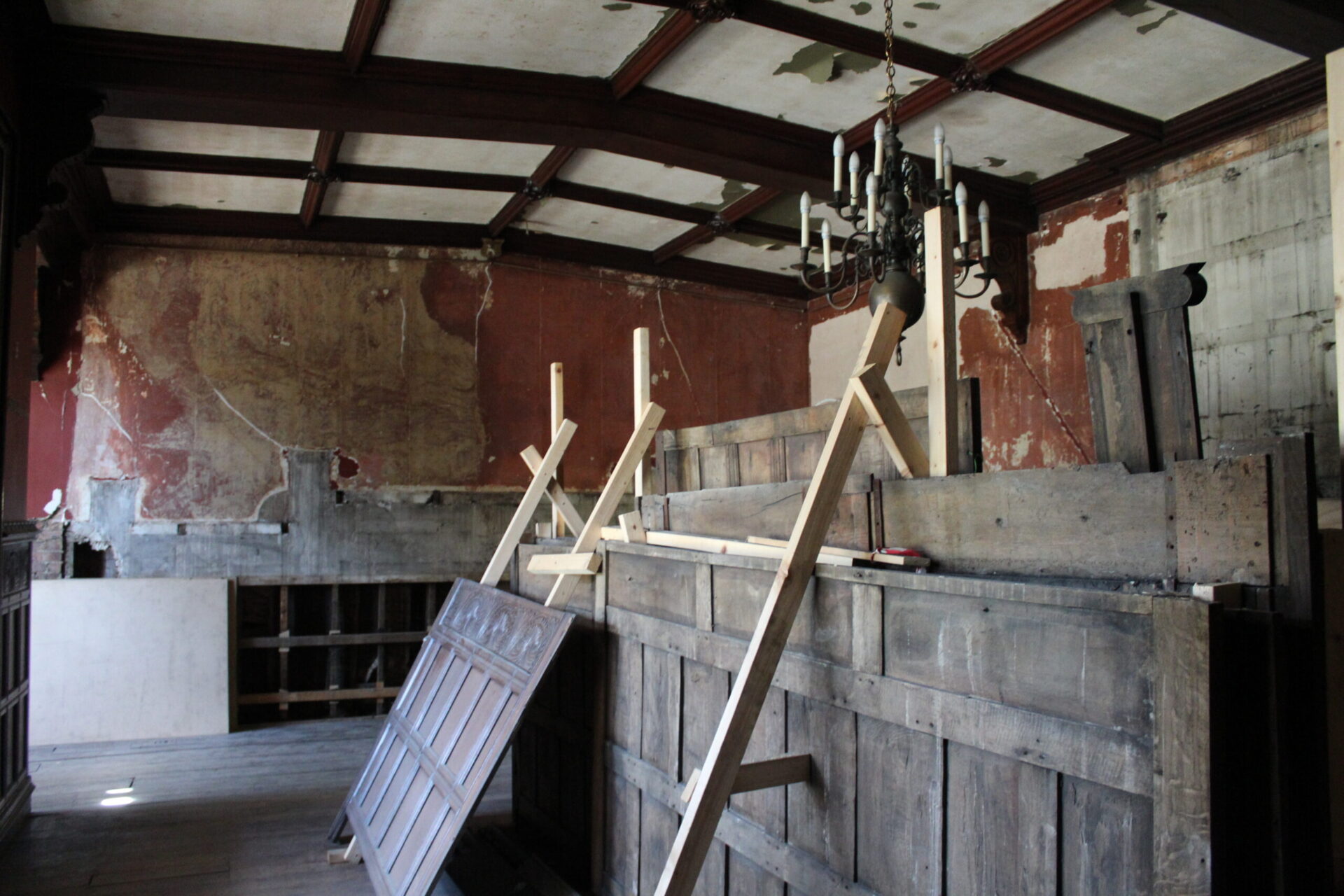
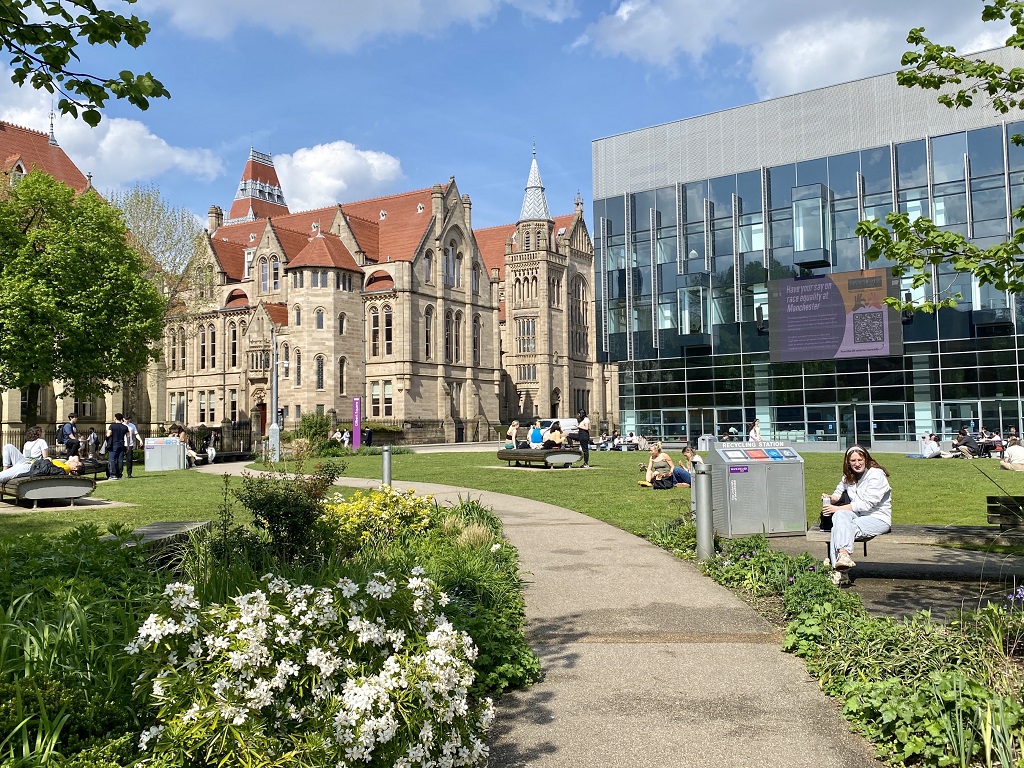
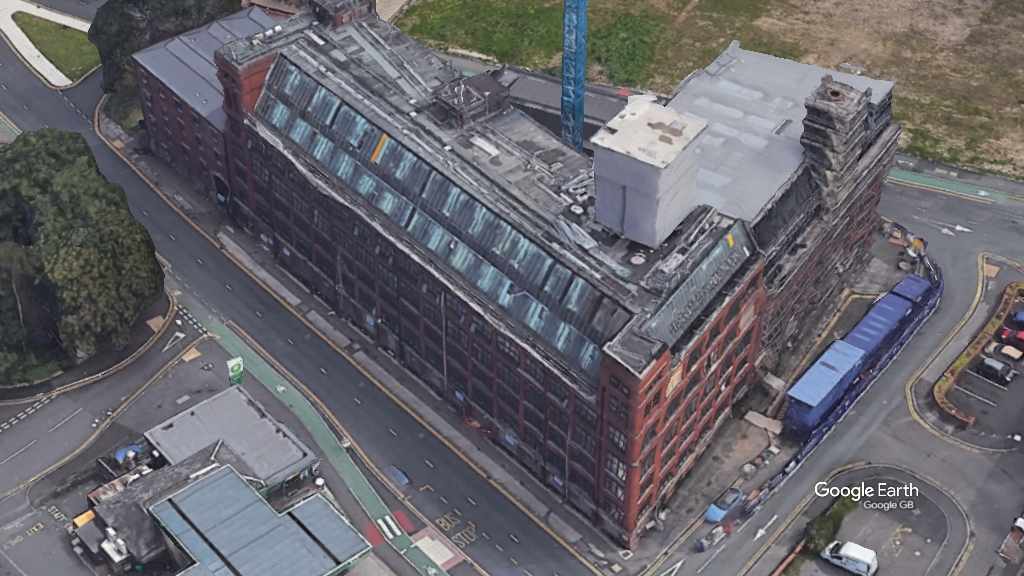
A fantastic article. It is never a quick process to restore a historical building. R3 Polygon UK limited recently were involved with the restoration clean up of the Rennie Mackintosh building in Glasgow and Windsor castle back in the day when it also suffered a fire damage.
By Charles Stirling